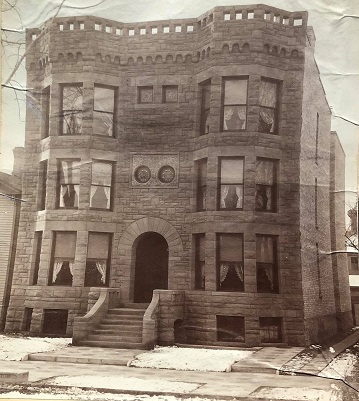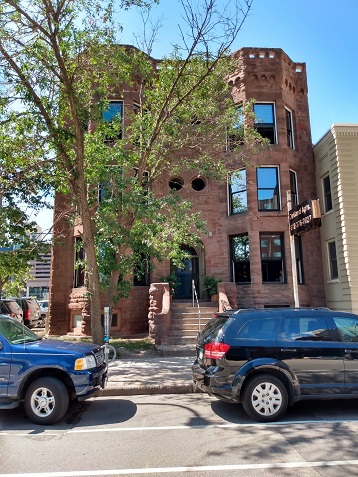About

1890

2019
Address: 213 9th Street South
Neighborhood: Downtown West
Construction Date: 1889
Contractor: Unknown
Architect: Harry Wild Jones
Architectural Style: Richardsonian Romanesque
Historic Use: Multi-family residence
Current Use: Multi-family residence
Date of Local Designation: 2019
Date of National Register Designation: N/A
Area(s) of Significance: Significant Events, Architecture, Master Architect
Period of Significance: 1889
Historic profile
Oakland Apartments has long been recognized as one of the first multiple-unit residential buildings built in Minneapolis, emblematic of the transition from walk-up units, each with its own exterior exit, to a multiple-family dwelling with units reached through a common, central corridor. The building’s continuous use as a multiple-unit residential building for one hundred thirty years and its persistence amidst major redevelopment over time is noteworthy.
The building also embodies the distinctive characteristics of an architectural style, the Richardsonian Romanesque style. Extremely popular in the 1880s and 1890s, the Richardsonian Romanesque style drew heavily from Medieval European architecture, evident in heavy masonry walls composed of rusticated stone blocks, low semi-circular arches, and elaborate stone carvings. Henry Hobson Richardson is considered to be one of the three greatest architects in American history, thanks in large part to his development of this style. The subject property is an interesting application of this style in a nineteenth-century apartment building. The symmetrical façade and flat roof facilitated uniform layouts for six apartments served by a central hallway: a cost-effective design in the latest style. Not only is the building an excellent example of the Richardsonian Romanesque style, it was designed by Richardson’s protégé, Harry Wild Jones, in his adopted hometown, Minneapolis.
From the establishment of his own practice in late 1885 or early 1886 until his death in 1935, Harry Wild Jones designed hundreds of residential, commercial, and institutional buildings across the United States as well as in Burma and China. This residence is one of the best remaining multi-family residential examples of Jones’ Richardsonian Romanesque designs in Minneapolis. The Richardsonian Romanesque designs of Jones are especially important to understanding this architect’s legacy, given that his first job was working for the architect credited with the development of this style: Henry Hobson Richardson. In his later years, Jones reflected upon this period as being of great significance in his career and artistic development, crediting his time under Hobson with heavily influencing his taste in architecture.
Photo credits
1890 – Hennepin History Museum
2019 - CPED Staff
Works cited
“Oakland Apartments Designation Study,” 2019.

